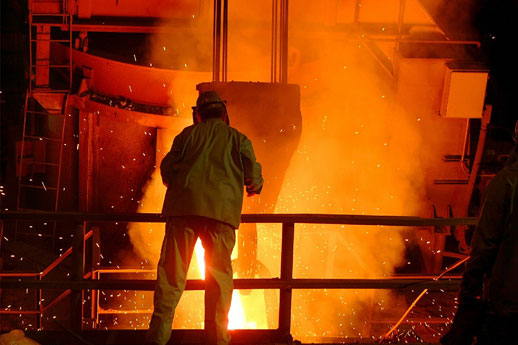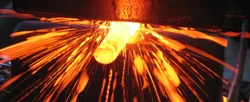Forging is the process by which metal is heated and is shaped by plastic deformation by suitably applying compressive force. Usually, the compressive force is in the form of hammer blows using a power hammer or a press.
Forging refines the grain structure and improves the physical properties of the metal. Forgings are consistent from piece to piece, without any of the porosity, voids, inclusions, and other defects. Thus, finishing operations such as machining does not expose voids, because there aren’t any. Also coating operations such as plating or painting are straightforward due to a good surface, which needs very little preparation.
Common Forging Processes
Open Die Forgings / Hand Forgings
Open die forgings or hand forgings are made with repeated blows in an open die, where the operator manipulates the workpiece in the die. The finished product is a rough approximation of the die. This is what a traditional blacksmith does and is an old manufacturing process.
Impression Die Forgings / Precision Forgings
Impression die forgings and precision forgings are further refinements of the blocker forgings. The finished part more closely resembles the die impression. We have pneumatic hammers for doing the Impression Die Forgings.
Press Forgings
Press forging uses a slow squeezing action of a press, to transfer a great amount of compressive force to the workpiece. Unlike open die forging where multiple blows transfer the compressive energy to the outside of the product, press forging transfers the force uniformly to the bulk of the material. This results in uniform material properties and is necessary for large-weight forgings.
Upset Forgings
Upset forging increases cross-section by compressing the length, this is used in making heads on bolts and fasteners, valves, and other similar parts.
Seamless Rolled Rings Forgings
Seamless rolled ring forging is typically performed by punching a hole in a thick, round piece of metal (creating a donut shape), and then rolling the donut into a thin ring.
Swaging
Swaging – a tube or rod is forced inside a die and the diameter is reduced as the cylindrical object is fed. The die hammers the diameter and causes the metal to flow inward causing the outer diameter of the tube or the rod to take the shape of the die.
Aluminium Forgings
Aluminium drop forged pieces will always offer the most economical solution when, in addition to being lightweight, such factors as strength, appearance, and recycling potential is also important. We specialize in aluminium drop forged pieces. We can employ any aluminium (HE12, HE15, HE30, 6061, 6063, and others) according to the demands of the clients. We do close die forgings using the most modern Friction Screw Presses and Drop Hammers.




